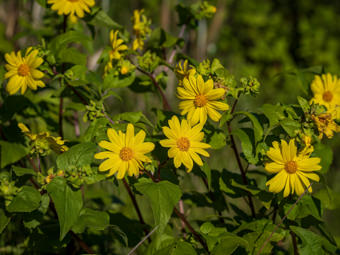
| Common Name(s): | Perezia, Sacapellote |
| Scientific Name: | Acourtia microcephala |
| Family: | Asteraceae (Sunflower) |
| Plant Type: | Perennial |
| Size: | up to five feet high |
| Habitat: | Woodland and or Chaparral |
| Blooms: | May to July |
| Fire Response: | Sprouts from stump |
Sacapellote or Acourtia microcephala This plant is a fire-follower. The flowers on this perennial herb are found in hues from rose to purple and on rare occasion white.
The technical term for the flowers is bilabiate, discoid flower heads. This translates to a flower with an upper and lower segment (the upper is 2 joined petals while the lower segment has 3 joined petals) with the flowers having a regular, tubular corolla (like a bell). Snapdragons and Monkey Flowers are also bilabiate. The petals are about 3/8 inch long. The petals seem to alternate with white bristles (referred to as Pappus). The flower bud appears as striped white and chocolate-brown in color. When the the plant blooms you will see splashes of red, yellow, orange and white on the styles and beautiful white anthers. The white Pappus reminds me of shaving brushes. The petals are discarded when the seeds are ready for dispersal - this leaves the white Pappus shifting in the breeze until the wind carries the seed off. This plant blooms well after the first flowers of Spring. Milt's book say June to August but it really depends on the timing of the rains.
The leaves of this plant are alternating on the stem and are between four and eight inches in length. One interesting fact about the leaves is the way they connect to the stem - look for a heart shaped clasp where they connect to the stem.
Link to Calflora.net - the best source of this fascinating information.
Name Origin: Acour'tia: after a Mrs. Mary Elizabeth Catherine Gibbes A'Court (1792-1878), daughter of Abraham Gibbes and wife of Lt-Gen. Charles Ashe a'Court. Mary was an English amateur botanist (ref. genus Acourtia, formerly Perezia). microceph'ala/microceph'alum: forming small heads
Contributed by George Sherman
Aster diagram provided by Jenn Deutscher
Link to the artist's website
































